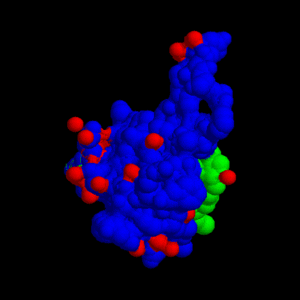Researchers at Boston University College of Health & Rehabilitation Sciences: Sargent College have identified a combinatorial therapeutic approach that has proven effective in treating muscular dystrophy in a mouse model.
The findings, published in Human Molecular Genetics, represent a paradigm shift for the treatment of muscular dystrophy as well as a host of other disabling and devastating muscle diseases.
The study was led by Mahasweta Girgenrath, PhD, assistant professor and director of the Muscle Disorders and Regenerative Biology Laboratory at BU Sargent College’s Department of Health Sciences. Boston University (BU) researchers and postdoctoral fellows Jenny Yamauchi, Ajay Kumar, Lina Duarte, and Thomas Mehuron were collaborators on this study.
Muscular Dystrophy type 1A (MDC1A) is the second most common form of congenital muscular dystrophy. Patients with this disease have poor muscle tone at birth, extremely compromised neuromuscular function, and are rarely able to walk independently. Most patients with MDC1A succumb to a premature death due to either respiratory complications or failure to thrive. Although significant strides have been made towards understanding the molecular and biochemical mechanisms underlying MDC1A, there remains no effective therapy in place to combat this lethal disease.
The research team, led by Girgenrath, hypothesized that the complex pathology seen in MDC1A may be the result of dysregulation of multiple cellular functions and processes, meaning that strategies which simultaneously target several of those mechanisms might lead to a reduction of symptoms.
“Very few studies have utilized the power of combinatorial therapy in the context of muscular dystrophy.” said Professor Girgenrath, the study’s corresponding author. “While most MD treatments are single-target therapies, we’re delving into combinations of different therapies to target multiple pathways.”
The research team studied the outcome of combining the following single mode treatments: increasing regeneration, by overexpressing muscle specific insulin like growth factor-1, IGF-1 and preventing cell death, by inhibiting the expression of Bax, a pro-apoptotic protein. In addition, to test the translational potential of this combination therapy, the researchers systemically treated Bax deficient dystrophic mice with recombinant human IGF-1 (IPLEX TM, manufactured by Insmed Inc).
By combining these two therapies, researchers found that in addition to increased body and muscle weight, mice showed enhanced locomotory capacities and remarkable improvement in muscle pathology. The most impressive outcome was the significant resolution of inflammation and fibrosis, not seen with single mode therapies. The research team concluded that the use of this combination therapy is an effective treatment for MDC1A, highlighting a compelling argument that a combinatorial approach has a synergistic benefit and could have the potential of treating patients with congenital muscular dystrophy.
The Latest Bing News on:
Novel Therapy to Treat Muscular Dystrophy
- Boy Dosed with Pfizer DMD Gene Therapy Dies a Year after Phase II Trialon May 7, 2024 at 7:19 pm
Pfizer has paused enrollment in a Phase III trial assessing its Duchenne muscular dystrophy (DMD) gene therapy candidate fordadistrogene movaparvovec after acknowledging the sudden death of a young ...
- Young boy dies in trial for Pfizer Duchenne gene therapyon May 7, 2024 at 2:57 pm
A boy with Duchenne muscular dystrophy died after receiving a Pfizer experimental gene therapy. The company is pausing its trial in older boys.
- Patient dies in Pfizer study of Duchenne gene therapyon May 7, 2024 at 2:39 pm
Pfizer said the patient, a young boy who was treated earlier last year, had died suddenly. The company is working with trial researchers to investigate further.
- Pfizer’s Duchenne Gene Therapy Trial Faces Setback As Young Participant Dieson May 7, 2024 at 1:36 pm
Pzifer said the drug concerned was fordadistrogene movaparvovec (PF-06939926) an investigational gene therapy developed by the company. They added that they have stopped giving that particular dose to ...
- Pfizer pauses phase 3 dosing in gene therapy trial after young boy's deathon May 7, 2024 at 1:29 pm
A young boy with Duchenne muscular dystrophy (DMD) participating in Pfizer’s phase 2 gene therapy trial has died, the pharma shared in a May 7 ...
- Pfizer Pauses Gene Therapy Trial for Muscle Disease After Deathon May 7, 2024 at 1:27 pm
Pfizer Inc. paused a study of an experimental gene therapy for muscular dystrophy after a child who received it died suddenly.
- 5 DMD Data Readouts to Watch in 2024on May 5, 2024 at 9:06 pm
With three FDA approvals in the past 10 months, there is a lot of momentum in the Duchenne muscular dystrophy space. Here are five companies looking to keep it going.
- Ineffective Treatment of Muscular Dystrophy with an Anabolic Steroid and Other Measureson April 28, 2024 at 5:00 pm
Digitoxin and androstenolone given either alone or in combination do not have therapeutic usefulness in the treatment of any of the most common forms of muscular dystrophy. From the departments of ...
- An FDA pathway can accelerate innovation for Duchenne muscular dystrophyon April 22, 2024 at 1:31 am
Few treatments are available for people with Duchenne muscular dystrophy. The FDA's accelerated approval program can help change that.
- ELEVIDYS Gene Therapy Shows Promise for Duchenne Muscular Dystrophyon April 7, 2024 at 5:02 pm
Developed by Sarepta Therapeutics, ELEVIDYS is approved for the treatment of Duchenne muscular dystrophy (DMD) in ambulatory patients aged 4 through 5 years with a confirmed mutation in the DMD gene.
The Latest Google Headlines on:
Novel Therapy to Treat Muscular Dystrophy
[google_news title=”” keyword=”Novel Therapy to Treat Muscular Dystrophy” num_posts=”10″ blurb_length=”0″ show_thumb=”left”]
The Latest Bing News on:
Muscular dystrophy
- Boy Dosed with Pfizer DMD Gene Therapy Dies a Year after Phase II Trialon May 7, 2024 at 7:19 pm
Pfizer has paused enrollment in a Phase III trial assessing its Duchenne muscular dystrophy (DMD) gene therapy candidate fordadistrogene movaparvovec after acknowledging the sudden death of a young ...
- Young boy dies in trial for Pfizer Duchenne gene therapyon May 7, 2024 at 2:57 pm
A boy with Duchenne muscular dystrophy died after receiving a Pfizer experimental gene therapy. The company is pausing its trial in older boys.
- Patient dies in Pfizer study of Duchenne gene therapyon May 7, 2024 at 2:39 pm
Pfizer said the patient, a young boy who was treated earlier last year, had died suddenly. The company is working with trial researchers to investigate further.
- Pfizer’s Duchenne Gene Therapy Trial Faces Setback As Young Participant Dieson May 7, 2024 at 1:36 pm
Pzifer said the drug concerned was fordadistrogene movaparvovec (PF-06939926) an investigational gene therapy developed by the company. They added that they have stopped giving that particular dose to ...
- Pfizer pauses phase 3 dosing in gene therapy trial after young boy's deathon May 7, 2024 at 1:29 pm
A young boy with Duchenne muscular dystrophy (DMD) participating in Pfizer’s phase 2 gene therapy trial has died, the pharma shared in a May 7 ...
- Pfizer Pauses Gene Therapy Trial for Muscle Disease After Deathon May 7, 2024 at 1:27 pm
Pfizer Inc. paused a study of an experimental gene therapy for muscular dystrophy after a child who received it died suddenly.
- My Turn | Illinois can lead the way in the fight for a cure to Duchenne Muscular Dystrophyon May 7, 2024 at 2:45 am
"Knowing that both of our sons have what is essentially a death sentence was and is devastating," writes Daniel Flessner of Roberts.
- 5 DMD Data Readouts to Watch in 2024on May 5, 2024 at 9:06 pm
With three FDA approvals in the past 10 months, there is a lot of momentum in the Duchenne muscular dystrophy space. Here are five companies looking to keep it going.
- Duchenne Muscular Dystrophy: the global clinical trials landscape 2024on April 29, 2024 at 4:00 am
Clinical trials across the globe are investigating new treatments for Duchenne Muscular Dystrophy, improving muscular and skeletal health.
- Ineffective Treatment of Muscular Dystrophy with an Anabolic Steroid and Other Measureson April 28, 2024 at 5:00 pm
The purpose of this report is to re-evaluate such a therapeutic program in muscular dystrophy when the drugs are used singly, in combination and with or without exercise. Objective serial ...
The Latest Google Headlines on:
Muscular dystrophy
[google_news title=”” keyword=”muscular dystrophy” num_posts=”10″ blurb_length=”0″ show_thumb=”left”]











